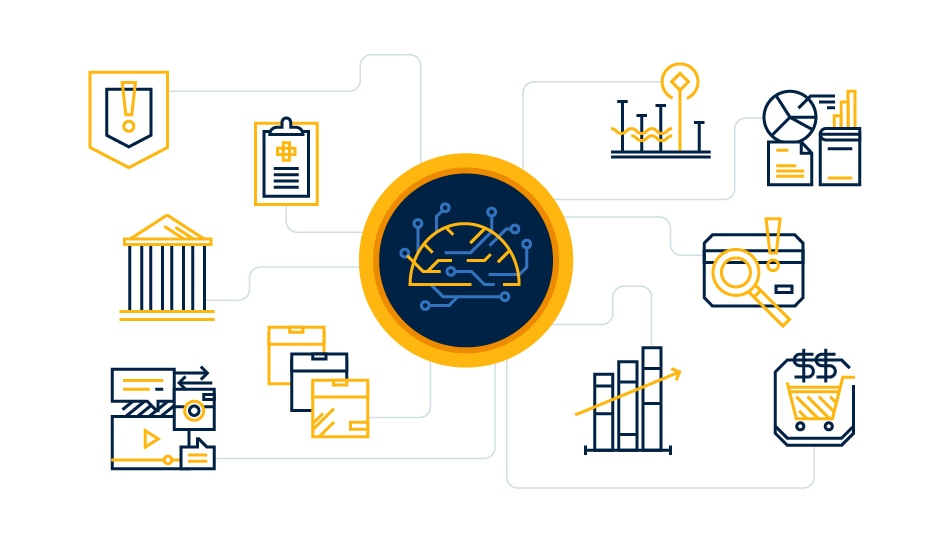Technology is becoming more popular among businesses and can help improve business processes. Machine Learning is a branch of artificial intelligence that allows machines to learn from experience. It also helps computers make predictions and classifications automatically. It is beneficial for predictive analytics and machine learning algorithms.
Understanding Machine Learning
What is machine learning in simple words? Machine Learning (ML) is artificial intelligence that allows machines to learn and improve over time. It can analyze large amounts of data to uncover hidden patterns and insights. ML is used for various business applications, and its benefits increase as it becomes more sophisticated and widespread. Businesses use ML to develop products, predict future outcomes, and automate operations. There are several types of machine learning, including supervised, unsupervised and deep learning. Supervised learning is the most common type and involves training a machine with labeled data to help it understand how to recognize certain types of information. Examples of supervised machine learning are image recognition and object detection algorithms. These algorithms learn to identify images of objects and animals. It can also identify customer trends and predict customer behavior to make better recommendations. For example, many e-commerce sites use machine learning to power customer recommendation engines, which provide customers with personalized product suggestions. These models rely on data points, such as a customer’s past purchase history, to determine what products they want to buy next. They also consider demographic trends and other information to personalize the experience for each customer. The main benefit of ML is that it can quickly find insights into vast volumes of data, even if those data points need to be structured or well-labeled. The technology also allows businesses to extract actionable information at scale, which can be applied to virtually any business data.
Benefits
Businesses are leveraging machine learning technology to gain insights from their data that can drive business growth and improve customer experiences. Machine learning is an advanced form of artificial intelligence that can quickly and accurately analyze large amounts of data. It can identify patterns, predict outcomes and make informed decisions in various business scenarios. Typical uses include predicting consumer behavior, forecasting demand, and providing customized customer service.
Using machine learning to understand customers’ preferences can help companies create targeted marketing campaigns to engage their audience. Online retailers, for example, use machine learning algorithms to analyze customer purchasing habits and suggest products that are likely to be popular with them. These platforms can also help businesses track and prevent customer churn, ensuring they retain a solid, loyal client base. Following a customer’s past purchase history and browsing behaviors, these applications can spot potential trouble areas and suggest ways to fix them. Another great way that machine learning can help your business is by analyzing the way your clients interact with your website and app. These applications can allow you to target relevant ads and notifications to your customers, making them more likely to return. By reducing the time it takes to detect and respond to security breaches, machine learning can help your business significantly reduce cyber-attack risks. This can help your business save money in the long run by protecting valuable information and avoiding costly corrective actions. Machine learning is an invaluable tool that can be used to improve any business. It can help a company to make faster and more informed decisions, increase efficiency and boost customer loyalty. In addition, it can help a business to be more secure and protect its reputation.
How can it help businesses?
Machine learning (ML) is a subset of the field of artificial intelligence that businesses have increasingly adopted for its ability to improve productivity and reduce costs. It uses algorithms to automatically find important information in large databases and then apply data-analysis techniques to identify trends. This application can search massive amounts of data to find tax documents, legal contracts, and other business-related documents. It will save companies time and money by freeing their employees from monotonous, repetitive tasks. It also helps automate many routine tasks, allowing human employees to focus on more critical activities. Using ML-powered systems, businesses can quickly detect fraud by looking at historical and real-time data patterns. It can identify when a customer is trying to use their credit card fraudulently and even distinguish between fraudulent transactions that fit within the expected norms and those that are more likely to be fraudulent. A business can also use ML to predict when equipment will break down and plan preventative maintenance schedules before it breaks down, saving the company money by reducing downtime. It can also automatically track production and inventory levels so that managers can determine when to add new products or adjust stock levels to meet demand. In addition, ML-powered systems can help businesses to spot and avoid cyber threats by automatically scanning and tracking suspicious activity.






